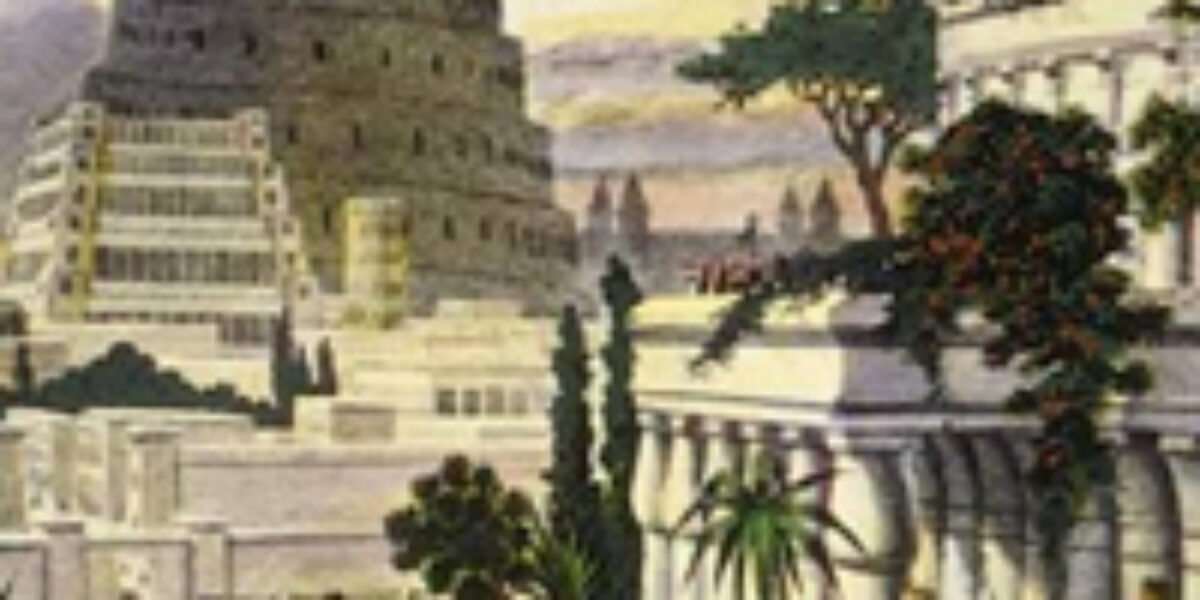Babylon was a powerful kingdom in the Ancient Near Eastern world that conquered Judah and sent the people into exile. But Babylon is also an important image that appears in the New Testament. Read more about the significance of Babylon here.
What does this ancient city have to do with today’s world? See what part it played during biblical times, then think about how it relates to modern times.
In the Bible, Babylon is the name for both the Mesopotamian region known as Babylonia and for its capital city. In the ancient language of Akkadian, Babylon means “the gate of the god.” People lived in the region of Babylonia as early as 5000 B.C. However, the first written evidence of Babylon comes from around 2200 B.C.
Shortly after 2000 B.C., the Amorite people began to rule Babylon. The most famous Amorite king was Hammurabi (1792-1750 B.C.). He was a strong ruler who brought unity to the many small states in Babylonia. Hammurabi is most famous for a Law Code that still carries his name. While it resembles Hebrew law in form, style, and general content, there are also marked differences.
Babylon was famous in the ancient world as a center for writing and scholarly study. It was known as a place where ancient astrologers studied the stars and the movement of the planets, and made predictions about the future (Isaiah 47:13).
During the time of Israel’s King Solomon (970–931 B.C.), Babylonia was not a powerful military threat and carried on trade with countries to its west, including Egypt and Israel. Around 750 B.C., Babylonia began to rise in fame and influence once again, beginning with the reign of King Nabonassar (747-734 B.C.). At this time, the strong Assyrian kingdom brought Babylonia under its control, though certain local Babylonian leaders rebelled against the Assyrians. When Hezekiah ruled Judah, the Babylonian king Merodach Baladan II sent messengers to Jerusalem to ask for help. King Hezekiah welcomed these messengers and showed them the treasures of Israel’s temple and palace. The prophet Isaiah then warned Hezekiah that someday Babylonia would invade Jerusalem and send its people into exile (Isaiah 39:1-7).
The Babylonian king Nebuchadnezzar (also known as Nebuchadrezzar) came to power in 605 B.C. Under Nebuchadnezzar, the city of Babylon became a beautiful city. It had many impressive temples, a wide street for grand parades, and world-famous hanging gardens. He eventually led the invasion of Judah that Isaiah announced. The Babylonians destroyed Jerusalem and its temple, stole its treasures, and took many of its people into exile in Babylonia (2 Kings 24:10–25:21).
The final Babylonian king was Nabonidus (555-539 B.C.). His poor leadership and long periods of absence left the country weakened. In 539 B.C., the Persian ruler, Cyrus, defeated Babylonia. He gave permission to the Israelite people living in Babylonia to return home to Judah.
The Old Testament prophets describe the people’s exile in Babylonia as a punishment for sinning against the Lord (Isaiah 47:5-6; Jeremiah 13:15-20; 25:1-11). In the New Testament, Babylon is the name given to the evil kingdom and city that was opposed to God and God’s people (Revelation 14:8; 17:5; 18:2, 10, 21). But Babylon was probably just a code name for Rome and the Roman Empire (see 1 Peter 5:13).




